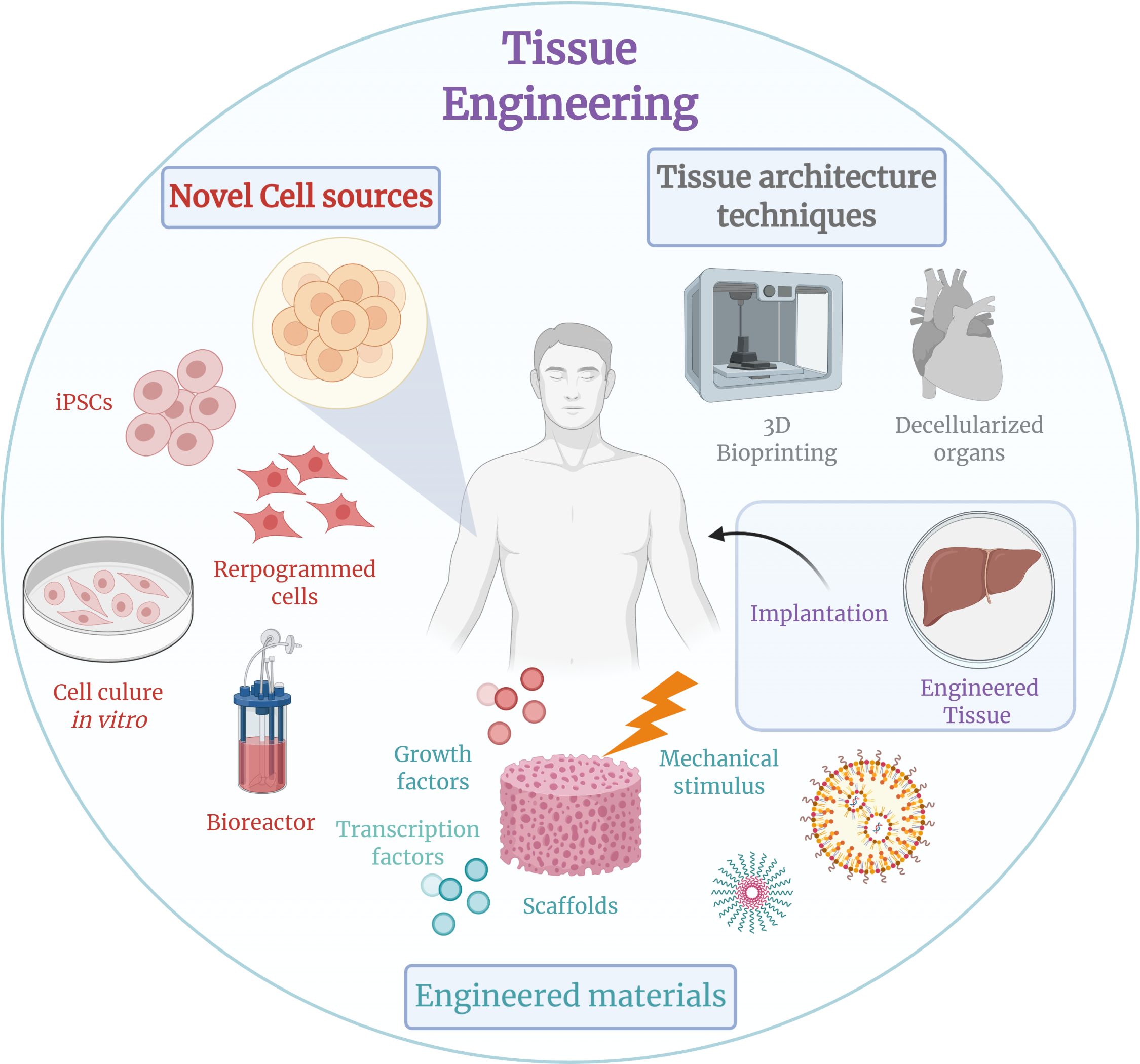|
List Of Nanoengineering Topics
The following outline is provided as an overview of and topical guide to nanotechnology: Nanotechnology is science, engineering, and technology conducted at the nanoscale, which is about 1 to 100 nanometers. Branches of nanotechnology * Green nanotechnology – use of nanotechnology to enhance the environmental-sustainability of processes currently producing negative externalities. It also refers to the use of the products of nanotechnology to enhance sustainability. * Nanoengineering – practice of engineering on the nanoscale. Multi-disciplinary fields that include nanotechnology * Nanobiotechnology – intersection of nanotechnology and biology. * Ceramic engineering – science and technology of creating objects from inorganic, non-metallic materials. * Materials science – interdisciplinary field applying the properties of matter to various areas of science and engineering. It investigates the relationship between the structure of materials at ... [...More Info...] [...Related Items...] OR: [Wikipedia] [Google] [Baidu] |
Nanophotonics
Nanophotonics or nano-optics is the study of the behavior of light on the nanometer scale, and of the interaction of nanometer-scale objects with light. It is a branch of optics, optical engineering, electrical engineering, and nanotechnology. It often involves dielectric structures such as nanoantennas, or metallic components, which can transport and focus light via surface plasmon polaritons. The term "nano-optics", just like the term "optics", usually refers to situations involving ultraviolet, visible, and near-infrared light (free-space wavelengths from 300 to 1200 nanometers). Background Normal optical components, like lenses and microscopes, generally cannot normally focus light to nanometer (deep subwavelength) scales, because of the diffraction limit ( Rayleigh criterion). Nevertheless, it is possible to squeeze light into a nanometer scale using other techniques like, for example, surface plasmons, localized surface plasmons around nanoscale metal objects, and ... [...More Info...] [...Related Items...] OR: [Wikipedia] [Google] [Baidu] |
Robotics
Robotics is the interdisciplinary study and practice of the design, construction, operation, and use of robots. Within mechanical engineering, robotics is the design and construction of the physical structures of robots, while in computer science, robotics focuses on robotic automation algorithms. Other disciplines contributing to robotics include electrical engineering, electrical, control engineering, control, software engineering, software, Information engineering (field), information, electronics, electronic, telecommunications engineering, telecommunication, computer engineering, computer, mechatronic, and materials engineering, materials engineering. The goal of most robotics is to design machines that can help and assist humans. Many robots are built to do jobs that are hazardous to people, such as finding survivors in unstable ruins, and exploring space, mines and shipwrecks. Others replace people in jobs that are boring, repetitive, or unpleasant, such as cleaning, ... [...More Info...] [...Related Items...] OR: [Wikipedia] [Google] [Baidu] |
Tissue Engineering
Tissue engineering is a biomedical engineering discipline that uses a combination of cells, engineering, materials methods, and suitable biochemical and physicochemical factors to restore, maintain, improve, or replace different types of biological tissues. Tissue engineering often involves the use of cells placed on tissue scaffolds in the formation of new viable tissue for a medical purpose, but is not limited to applications involving cells and tissue scaffolds. While it was once categorized as a sub-field of biomaterials, having grown in scope and importance, it can be considered as a field of its own. While most definitions of tissue engineering cover a broad range of applications, in practice, the term is closely associated with applications that repair or replace portions of or whole tissues (i.e. organs, bone, cartilage, blood vessels, bladder, skin, muscle etc.). Often, the tissues involved require certain mechanical and structural properties for proper functioning. ... [...More Info...] [...Related Items...] OR: [Wikipedia] [Google] [Baidu] |
Supramolecular Chemistry
Supramolecular chemistry refers to the branch of chemistry concerning Chemical species, chemical systems composed of a integer, discrete number of molecules. The strength of the forces responsible for spatial organization of the system range from weak intermolecular forces, electrostatics, electrostatic charge, or hydrogen bonding to strong covalent bonding, provided that the electronic coupling strength remains small relative to the energy parameters of the component. While traditional chemistry concentrates on the covalent bond, supramolecular chemistry examines the weaker and reversible non-covalent interactions between molecules. These forces include hydrogen bonding, coordination complex, metal coordination, hydrophobic effect, hydrophobic forces, van der Waals forces, pi–pi interactions and electrostatic effects. Important concepts advanced by supramolecular chemistry include molecular self-assembly, folding (chemistry), molecular folding, molecular recognition, host–gues ... [...More Info...] [...Related Items...] OR: [Wikipedia] [Google] [Baidu] |
Science
Science is a systematic discipline that builds and organises knowledge in the form of testable hypotheses and predictions about the universe. Modern science is typically divided into twoor threemajor branches: the natural sciences, which study the physical world, and the social sciences, which study individuals and societies. While referred to as the formal sciences, the study of logic, mathematics, and theoretical computer science are typically regarded as separate because they rely on deductive reasoning instead of the scientific method as their main methodology. Meanwhile, applied sciences are disciplines that use scientific knowledge for practical purposes, such as engineering and medicine. The history of science spans the majority of the historical record, with the earliest identifiable predecessors to modern science dating to the Bronze Age in Ancient Egypt, Egypt and Mesopotamia (). Their contributions to mathematics, astronomy, and medicine entered and shaped the Gree ... [...More Info...] [...Related Items...] OR: [Wikipedia] [Google] [Baidu] |
Self-organization
Self-organization, also called spontaneous order in the social sciences, is a process where some form of overall order and disorder, order arises from local interactions between parts of an initially disordered system. The process can be spontaneous when sufficient energy is available, not needing control by any external agent. It is often triggered by seemingly random Statistical fluctuations, fluctuations, amplified by positive feedback. The resulting organization is wholly decentralized, :wikt:distribute, distributed over all the components of the system. As such, the organization is typically Robustness, robust and able to survive or self-healing material, self-repair substantial perturbation theory, perturbation. Chaos theory discusses self-organization in terms of islands of predictability in a sea of chaotic unpredictability. Self-organization occurs in many physics, physical, chemistry, chemical, biology, biological, robotics, robotic, and cognitive systems. Examples of ... [...More Info...] [...Related Items...] OR: [Wikipedia] [Google] [Baidu] |
Quantum Mechanics
Quantum mechanics is the fundamental physical Scientific theory, theory that describes the behavior of matter and of light; its unusual characteristics typically occur at and below the scale of atoms. Reprinted, Addison-Wesley, 1989, It is the foundation of all quantum physics, which includes quantum chemistry, quantum field theory, quantum technology, and quantum information science. Quantum mechanics can describe many systems that classical physics cannot. Classical physics can describe many aspects of nature at an ordinary (macroscopic and Microscopic scale, (optical) microscopic) scale, but is not sufficient for describing them at very small submicroscopic (atomic and subatomic) scales. Classical mechanics can be derived from quantum mechanics as an approximation that is valid at ordinary scales. Quantum systems have Bound state, bound states that are Quantization (physics), quantized to Discrete mathematics, discrete values of energy, momentum, angular momentum, and ot ... [...More Info...] [...Related Items...] OR: [Wikipedia] [Google] [Baidu] |
Protein Engineering
Protein engineering is the process of developing useful or valuable proteins through the design and production of unnatural polypeptides, often by altering amino acid sequences found in nature. It is a young discipline, with much research taking place into the understanding of protein folding and recognition for protein design principles. It has been used to improve the function of many enzymes for industrial catalysis. It is also a product and services market, with an estimated value of $168 billion by 2017. There are two general strategies for protein engineering: rational protein design and directed evolution. These methods are not mutually exclusive; researchers will often apply both. In the future, more detailed knowledge of protein structure and function, and advances in high-throughput screening, may greatly expand the abilities of protein engineering. Eventually, even unnatural amino acids may be included, via newer methods, such as expanded genetic code, that allow e ... [...More Info...] [...Related Items...] OR: [Wikipedia] [Google] [Baidu] |
Physics
Physics is the scientific study of matter, its Elementary particle, fundamental constituents, its motion and behavior through space and time, and the related entities of energy and force. "Physical science is that department of knowledge which relates to the order of nature, or, in other words, to the regular succession of events." It is one of the most fundamental scientific disciplines. "Physics is one of the most fundamental of the sciences. Scientists of all disciplines use the ideas of physics, including chemists who study the structure of molecules, paleontologists who try to reconstruct how dinosaurs walked, and climatologists who study how human activities affect the atmosphere and oceans. Physics is also the foundation of all engineering and technology. No engineer could design a flat-screen TV, an interplanetary spacecraft, or even a better mousetrap without first understanding the basic laws of physics. (...) You will come to see physics as a towering achievement of ... [...More Info...] [...Related Items...] OR: [Wikipedia] [Google] [Baidu] |
Miniaturization
Miniaturization ( Br.Eng.: ''miniaturisation'') is the trend to manufacture ever-smaller mechanical, optical, and electronic products and devices. Examples include miniaturization of mobile phones, computers and vehicle engine downsizing. In electronics, the exponential scaling and miniaturization of silicon MOSFETs (MOS transistors) leads to the number of transistors on an integrated circuit chip doubling every two years, an observation known as Moore's law. This leads to MOS integrated circuits such as microprocessors and memory chips being built with increasing transistor density, faster performance, and lower power consumption, enabling the miniaturization of electronic devices. Electronic circuits The history of miniaturization is associated with the history of information technology based on the succession of switching devices, each smaller, faster, and cheaper than its predecessor. During the period referred to as the Second Industrial Revolution (), miniaturizati ... [...More Info...] [...Related Items...] OR: [Wikipedia] [Google] [Baidu] |
Engineering
Engineering is the practice of using natural science, mathematics, and the engineering design process to Problem solving#Engineering, solve problems within technology, increase efficiency and productivity, and improve Systems engineering, systems. Modern engineering comprises many subfields which include designing and improving infrastructure, machinery, vehicles, electronics, Materials engineering, materials, and energy systems. The Academic discipline, discipline of engineering encompasses a broad range of more Academic specialization, specialized fields of engineering, each with a more specific emphasis for applications of applied mathematics, mathematics and applied science, science. See glossary of engineering. The word '':wikt:engineering, engineering'' is derived from the Latin . Definition The American Engineers' Council for Professional Development (the predecessor of the Accreditation Board for Engineering and Technology aka ABET) has defined "engineering" as: ... [...More Info...] [...Related Items...] OR: [Wikipedia] [Google] [Baidu] |








